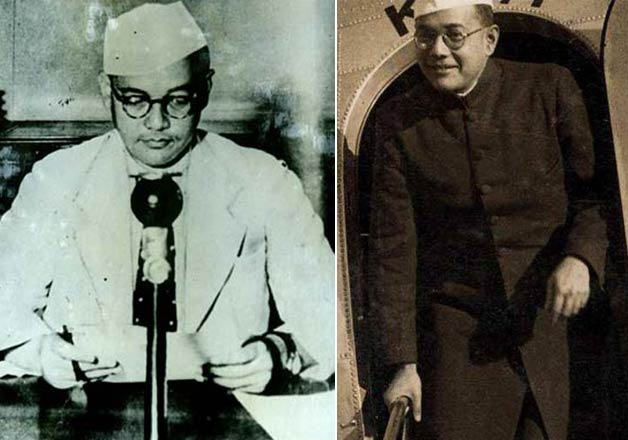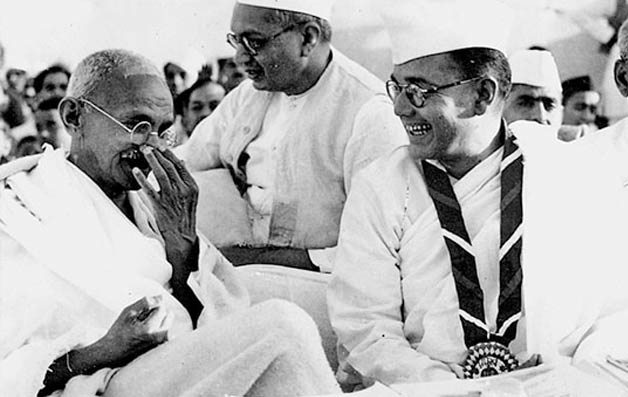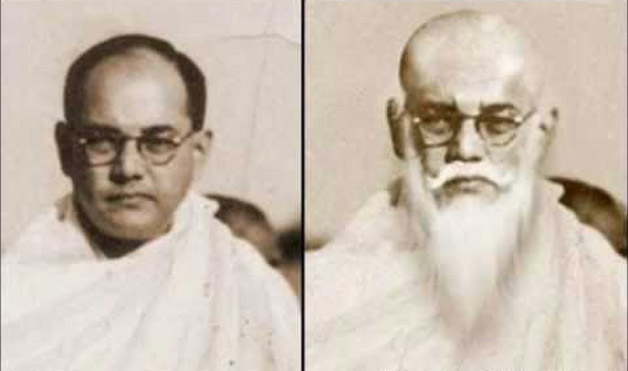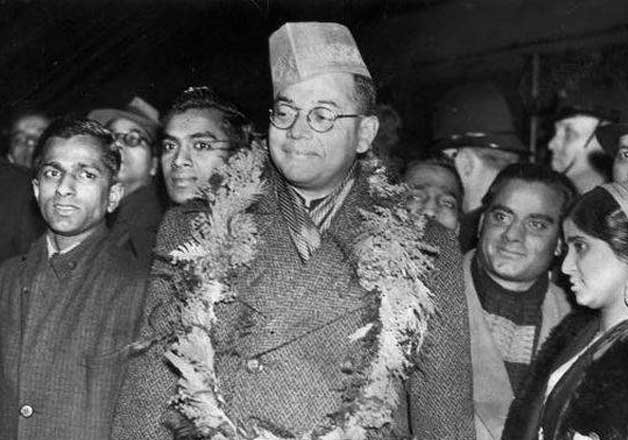The mystery of Netaji Subhas Chandra Bose death has remained unsolved even after seven decades of his sudden disappearance. The Government of India has maintained not to disclose secret files related to his death, adding to the complexity of the 20th century's most intriguing mystery.
Unfolding Netaji's story below:-
According to one popular version of events, Netaji died in an air crash in Taiwan on August 18, 1945. The plane crashed while taking off and Netaji was badly burnt. His body was cremated within two days. But there is no proof for the same. (scroll down for video)
Many of his relatives, friends and followers have disagreed with this sequence of event. This prompted Government of India to commission three different inquiries into his death between 1956 and 1999. Even after seven decades, the mystery remained unsolved.
Secret files may lift the veil on Netaji's death
The government has always refused to declassify documents related to Netaji's death. In Prime Minister's Office (PMO), there are 41 files out of which 20 are related to the leader's sudden death.
While in Ministry of External Affairs (MEA), there are 29 classified files, the Ministry of Home Affairs (MHA) has 70,000 pages documents which can unfold the mystery of Netaji's death. In 2007, 10,000 pages of classified documents from MHA were sent to National Archives.
Anuj Dhar, who authored several books on mystery related with death of Netaji, said, "The Ministry of External Affairs has 29 files... seven are top secret. Maximum files have information related to his ashes, wealth and Russia."
Why govt not declassifying files?

The government has repeatedly denied declassifying documents related to Netaji saying it will create an adverse impact on India's ties with many foreign friendly countries.
The present NDA government too toed the line adopted by the previous Congress-led UPA government when Prime Minister Narendra Modi's office refused to disclose records related to Netaji's death.
RTI activist Subhash Agrawal had sought records related to the freedom fighter from the PMO to clarify the mystery surrounding his death in a plane crash 70 years back. But the Modi government, toeing the line of erstwhile regime, cited an exemption clause in the RTI Act which allows withholding of information that could prejudicially affect relations with a foreign country. The PMO, however, did not revealed the names of the countries with which the relations may get affected once the said information is made public.
Netaji's kin have been demanding declassification of documents saying there is a larger public interest involved in putting these classified papers in public domain.
Azad Hind Sena

Netaji founded Azad Hind Sena in Singapore in 1943 to prepare a path for India's freedom. As soon as Azad Hind Sena revolted against British empire, Japan's head of state General Tojo handed over two islands Andaman and Nicobar won from England to Azad Hind Sena. On 29 December, 1943, Netaji visited Andaman as head of the state of free India and hoisted a flag and paid homage to revolutionaries who had undergone punishment in the cellular jail. Netaji moved his military to Burma in January 1944. It was on March, 1944, that history was created when Azad Hind Sena entered India.
Later, the US and Britain led Allied forces captured Singapore. On August 14, 1945, it was announced that Japan had surrendered unconditionally to the Allied forces, effectively ending World War II. Following this, on August 15, Netaji boarded a Tokyo-bound flight from Bangkok.
Dhar, however, contradicted this saying on August 16, 1945, Netaji had left for Russia instead of Tokyo.
"Netaji was a visionary person... This was a part of his plan. He was aware of the fact that Japan is losing its ground. People said that Netaji's safety was important because 'Bharat Chhodo Andolan' (Quit India Movement) was gaining momentum in India. Netaji sought help from Russia. He left for Russia... the plane crash sequence was merely a drama," he said.
No proof available to certify Netaji's last rites
It is interesting to note that the news related to Netaji's death surfaced after five days of the plane crash.
Dhar's book titled 'India's biggest cover-up' claimed that there was no proof available to certify Netaji's funeral took place.
"It was alleged that Netaji was cremated after plane crash. I have seen the records of last rites... there was no record of Netaji," he said.
According to TMC MP and Netaji's grandnephew Sugata Bose, the family members had approached the Japan and Taiwan authorities to know the truth behind his mysterious death.
"When the news of Netaji's death surfaced in 1945, my grandfather and father acknowledged it. In 1965, my father went to Japan and Taiwan to know the truth. Intelligence report is also available on this," he said.
Churchill wanted to assassinate Netaji
Sugata said that Netaji was well prepared to take on Britishers. Perhaps this was the only reason that the then British PM Winston Churchill wanted to kill Netaji.
A biography based on Netaji, while citing a British document, claimed that in 1941, Churchill had ordered to assassinate Netaji.
After news of Netaji's death, a British spy agency conducted an investigation to know Netaji's whereabouts. The agency headed by senior office Phillip Phinney, in its report, discovered that Netaji was no more but there were no proofs available to confirm his death.
Dhar claimed that after India attained independence in August 1947, the Intelligence Bureau (IB) secretly at the behest of Government of India removed the parts of British report in which it had recommended to investigate Netaji's case further.
"Government puts only those papers in file which it feels are in its favour... but when you scrutinise the papers, you will come to know that initially the intention of government was not very affirmative about Netaji," he said.
Shah Nawaz Committee (1955)
The government in 1955 formed the Shah Nawaz Committee comprising members from Netaji's family to probe his death. The panel in its report clearly stated that Netaji died in the plane crash. But Suresh Bose, Netaji's elder brother disagreed with the fact. He was of the view that Netaji has taken shelter somewhere in Soviet Union.
Khosla Commission (1970)
In 1970, the Government of India appointed one-man commission to enquire into the disappearance of Netaji. The investigator was GD Khosla, a retired Chief Justice of the Punjab High Court. Justice Khosla concurred with the earlier reports of Phinney and the Shah Nawaz Committee on the main facts of Netaji's death. He also evaluated the motives of those stories explaining Netaji's disappearance.
Justice Mukherjee Commission (1999)
The Justice Mukherjee Commission was one-man panel instituted in 1999 to inquire into the controversy surrounding Netaji's death. The findings of Justice Manoj Mukherjee, a retired judge of the Supreme Court of India, stated that Netaji did not die in the plane crash.
Why Nehru snooped on Netaji's kin?
BJP national spokesperson MJ Akbar questioned that what was the need of Jawaharlal Nehru government to snoop on Netaji's kin when it had accepted that the free fighter had died in the plane crash?
"Britishers and the then Congress establishment had formulated a story that Netaji died in a crash... If this was the reality, what was the need of snooping? This is a mystery," he said.
Dhar said, "There is only one secret paper related to the death of Lal Bahadur Shastri. The document is presently with the PMO whereas in case of Netaji, there are 41 files with PMO. This signifies that the government's stand... how the Congress leaders and so called followers of 'non-violence' conspired against Netaji."
No secret file for Mahatma Gandhi's assassination
He also question why no secret file was prepared after Mahatma Gandhi's assassination.
"You (government) never thought of preparing a secret file about Gandhi's death. But why so much secret files in the case of Netaji? There are files of 70s, 80s and even 90s. I am surprise to see this kind of treatment," he said.
"Once Bhupinder Singh Hooda had written a letter to the Central government demanding a memorial in the name of Netaji. But the government once again added a secret file on this," he added.
Netaji imprisoned in Siberia
There is another theory related to Netaji's death. It says that Netaji was imprisoned in Yakutsk Prison in Siberia. But there is no proof to certify this.
Dhar said, "Netaji's wife died in 1996. She had said that Netaji was in Russia."
Dhar suggested that government should seek Russia's help to unfold the truth but much before this, the government should declassify the files related to the leader's death which it has kept in its possession.
"There are few files in Russia. Before seeking the details of these files, government has to declassify all secret documents available with it," he said.
Mahatma Gandhi behind Netaji's exile?

There is a file in PMO, according to Dhar, which claims that Mahatma Gandhi also played a key role in Netaji's exile.
"There is secret file in the PMO which was written on the behalf of Mahatma Gandhi. It claims that if Netaji had returned to India from Russia, Gandhi would have become helpless. The entire system was afraid of the outcome of his return. They were so called followers of 'non-violence'. They were afraid of Netaji's popularity. This was the reason why these people kept preparing secret files," he said.
Who was Gumnami Baba?

Another story is that Netaji changed his identity as Bhagwanji, also known as Gumnami Baba, a mysterious Indian monk who in 1985 lived at Ram Bhawan in Faizabad, to live here.
Nizamuddin, a 102-year-old man claiming to be Netaji's driver-cum-bodyguard had few years back claimed that the freedom fighter was not killed in an air crash but died as Gumnami Baba in Faizabad.

